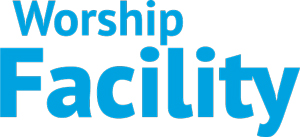The Easter holiday is a time of celebration, but it is also a time when safety and security concerns need to be at the forefront of church leaders’ minds. With the increase in attendance during this period, it’s essential to take the necessary steps to ensure the safety of church members, staff, and visitors. In this article, I will cover 10 practical steps you can take today to ensure the safety of your congregation this Easter holiday.
- Enter into Prayer
Before the start of your service, take time to calm your mind and focus on the task at hand. This includes spending time in prayer and meditation, reading scripture, reflecting on past Easter services, and journaling. Doing this will help you approach the service with a clear and focused mindset.
- Parking Lot Safety
The church parking lot can be a hotspot for potential safety hazards. Conducting a parking lot risk assessment and identifying potential hazards is critical. Additionally:
- consider the layout and design of the parking lot
- station a member of your safety team outside for the duration of the service
- train volunteers to recognize and respond to suspicious behavior, and
- make sure parking lot volunteers have a way to communicate with the rest of the church.
- Volunteer Screening
Screening all your volunteers who work with children or vulnerable populations is essential to ensure their safety. Ensure that volunteers have a clean criminal record and no history of child abuse. Enforce a “no cleared background, no volunteering” policy, develop a scope of screening, and train staff and volunteers on indicators of child sexual behavior and how to report it.
- Emergency Planning
Review and update your emergency operation plan that outlines how your church will respond to emergencies and communicate this to first responders. This includes speaking with your different ministry teams, addressing key communication, determining the number of radios needed, providing refresher training on how to use the radio and change the channel, and contacting police crime prevention specialists or homeland security departments.
- Safety and Security Team
Determine the number of volunteers needed based on the size of your church and expected attendance. This includes scheduling and availability, refreshing the response plan for most likely emergencies, familiarizing the team with the building, coordinating with other church leaders, and assigning a dispatch operator to monitor cameras.
- Medical Emergencies
Ensure that trained personnel and equipment are available to respond to medical emergencies. This includes refreshing the medical emergency response plan, identifying staff and volunteers with first aid skills and CPR training, coordinating with an Emergency Medical Technician (EMT), ensuring that first aid kits and automated external defibrillators (AEDs) are readily available, and communicating with religious leaders on what to do.
- Fire Safety
Effective fire prevention and response measures should be in place. This includes conducting a fire safety assessment, reviewing and updating the fire safety plan, checking fire extinguishers and smoke detectors, talking through evacuation procedures, informing staff and volunteers on the evacuation site, and meeting at the designated assembly point.
- Disturbance Response
Create a plan to respond to disturbances may occur during Easter services, such as disruptive behavior or conflicts between attendants. This includes developing procedures for de-escalating situations and safely removing disruptive individuals from the church, training staff and volunteers on how to recognize and respond to disturbances, determining who will deal with the individual post-event, and talking with local law enforcement about any local threats.
- Active Shooter Response
An active shooter situation is a terrifying prospect, but having a plan in place can help mitigate the harm. This includes reviewing training records, checking on changes to the church insurance, discussing the active violence response plan with the team, reviewing the active response plan with church leaders, and conducting active shooter drills.
- Emergency Communications
In an emergency situation, clear and effective communication channels are critical to disseminate important information to your church members and volunteers. Developing a communication plan that includes multiple channels such as email, text messaging, and social media is important. Additionally, ensuring that there are appropriate numbers of radios and that landlines are working, training staff and volunteers on how to use the communication channels, testing the communication plan, and having a media/press response emergency communication plan is also important.
There’s still time this Easter season
Safety and security should be a top priority for your church this Easter holiday. By reviewing the ten steps outlined, you can ensure the safety of your congregation, staff, and visitors. These steps include taking time for prayer, conducting a parking lot risk assessment, screening volunteers, reviewing the emergency plan, determining the number of security personnel needed, preparing for medical emergencies, ensuring effective fire safety measures, developing a disturbance response plan, preparing for active shooter situations, and establishing clear communication channels. By following these steps, you can create a safe and secure environment for everyone during this important Easter season.
Simon Osamoh is one of the country’s leading experts in securing houses of worship. He is a British American and founder of Kingswood Security Consulting and the Worship Security Academy. Simon spent 14 years as a Detective in England working serious and organized crime. He moved to the United States to Head Counter Terrorism at Mall of America, Minnesota. Simon is a Christian and has spent over two decades helping non-profits stay safe and secure. He is the author of two bestselling books 10 Powerful Strategies for Conflict De-escalation and Securing Church Operations. He is the host of the Church Security Made Simple Podcast and a member of the Worship Facility Editorial Advisory Board and has served Westwood Community Church as Security Advisor since 2014.

